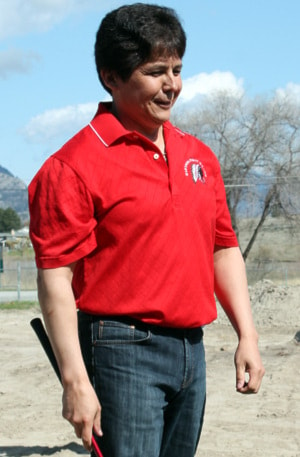Chief Clarence Louie is used to calling the shots for the Osoyoos Indian Band, so it’s no wonder he’s found it “really frustrating” going through another government’s rezoning process for a halfway house he wants to build.
“It’s really tough for us to have other people have a say on our property,” Louie told a committee of the Regional District of Okanagan-Similkameen last week.
The proposed halfway house, a five-bed facility for aboriginal parolees, is planned for a site on 45th Street in rural Osoyoos just outside OIB lands but still within RDOS jurisdiction. The house is currently used by band staff, and Louie said the ground under it is included in a land claim and is expected to fall under OIB control in three to five years.
The rezoning process began in earnest in February with an open house, followed by a public hearing in April. The rezoning went back to the RDOS board Thursday for final approval, but fell just short of the finish line.
As it turns out, the RDOS sent notice of the public hearing to everyone it had to within its jurisdiction, but not those living just over the line in OIB territory in the Spirit Ridge development.
One legal opinion later, and the board, which seemed receptive to the halfway house, delayed its decision until after another public hearing can be held.
“We didn’t quite get the process right on the first one,” said Allan Patton, the director for rural Oliver.
RDOS chief administrative officer Bill Newell told the board it could take six weeks for that hearing to take place. He was unsure exactly how many people need to be notified, as there are mulitple, absentee owners on many of the Spirit Ridge property titles.
Louie said he understands the neighbours’ complaints, mostly of the not-in-my-backyard variety, and has addressed some of them. Now he’s prepared to stand on the OIB’s record.
“We’ve proven to be good partners,” Louie said. “We don’t do things unprofessionally.”
Residents of the proposed halfway house will have to abide by a curfew, sign in and out of the facility, and submit to drug and alcohol tests, explained Melissa Taylor, project manager for the Correctional Service of Canada.
There are already 504 halfway house beds for federal parolees in B.C., she added, so “this is not a model that is new or untested.”
Furthermore, the residents, who will stay an average of six months, will be screened to ensure they are a good fit for the house and that they want to work, a condition attached to living there.
“We’re choosing the best of the best offenders for this facility,” Taylor said.
She also pointed out that aboriginals make up about three per cent of Canada’s population, but 20 per cent of the inmate population.
Louie said that shows the correctional system is not working because it lacks proper aboriginal-only supports, which demonstrates the need for such a halfway house, thought to be the unique in Canada.
